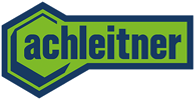TRAINING COURSES AT THE LOCAL OFFICES AND TWO BASIC COURSES
STANDARDISED TRAINING GUARANTEES PROBLEM-FREE COOPERATION, EVEN ACROSS BOUNDARIES OF LOCAL OFFICES.
As a mountain rescue candidate, you have a trial year to absorb as much technical mountain rescue knowledge and skills as possible. This is also the time to develop as an alpinist within the mountain rescue organisation and to remedy any deficits.
Once the candidate examination has been passed, the winter and summer courses follow. In each case, a week of intensive training in which the prospective mountain rescuer gets to know all facets of mountain rescue. But also a week full of camaraderie and wonderful tours in an impressive alpine landscape.
PRESENT TRAININGS
Training courses and exercises are held at the local offices on an ongoing basis. The entire spectrum of training is run again and again.
Anyone who wants to remain in the operational team of a local office must complete at least 6 training courses or exercises per year. As a candidate, you have a lot to learn in order to be prepared for the candidate examination and the basic courses.
The training management of the local offices must ensure that both emergency rescuers and trainees receive the best possible training in accordance with current standards.
COMPREHENSIVE BASIC TRAINING
Around 120 candidates per year take up the challenge of becoming a mountain rescuer. Most of them also make it to the basic courses.
One week of intensive training and practice in winter and one week in summer at the Jamtal training centre. Not everyone makes it, some fail on the 11-kilometre approach in winter, others fail living in a hut with 30 others in a confined space. But those who persevere still talk about their basic courses decades later.
WINTER COURSE
The aim of the basic winter training is to improve the participant’s skills
in ski mountaineering and light ice so that a mountain rescuer can move safely on the glacier with skis, crampons and ice axe during winter operations.
The course focuses on the topics of avalanche emergencies and winter mountaineering emergencies, both companion rescue and organised rescue
in alpine terrain.
After successfully completing the basic winter training, course participants should be able to locate, dig out and treat one or more buried persons after an avalanche as part of a companion or organised rescue, as well as carry out the necessary techniques in the area of crevasse rescue (companion and organised rescue). Participants are also trained in the areas of radio, orientation, bivouac construction and makeshift rescue techniques so that they can rescue themselves or bring themselves to safety in an emergency.
Theoretical subjects
- Tactical alpine medicine and first aid in winter
- Mountain rescue in general
- Alpine dangers in winter
- Snow and avalanche awareness
- Equipment and instrument technology
- Radio and operational tactics
- Avalanche transceiver search
- Avalanche emergency
- Avalanche operation
- Rope and belaying technology
- Ski mountaineering
- Bivouac building
- Tour planning
- Cartography and orientation
Practical subjects
- Tour planning
- Cartography and orientation
- Snow and avalanche awareness in backcountry
- Bivouac construction in the field
- Equipment and instrument technology
- Rope, belaying and knotting skills
- Hazard and accident awareness
- Makeshift rescue techniques
- Professional rescue techniques
- Avalanche emergency
- Professional avalanche operation
- Tactical avalanche rescue
SUMMER COURSE
The aim of the basic summer training is to improve the participant’s own skills in summer mountaineering or in glaciated mountain terrain so that a mountain rescuer can move safely up and down in alpine terrain with mountaineering and climbing boots and with crampons and ice axes during summer missions.
The focus of the course is on emergencies in mountaineering in summer, both companion rescue and organised rescue in alpine terrain.
After successfully completing the basic training in summer, course participants should be able to rescue and care for one or more injured persons as part of a companion or organised rescue, as well as perform the necessary techniques in the area of crevasse rescue (companion and organised rescue). Participants are also trained in the areas of radio, orientation and makeshift rescue techniques so that they can rescue themselves or bring themselves to safety in an emergency.
Theoretical subjects
- Tactical alpine medicine and first aid in summer
- Alpine dangers in summer
- Glaciology
- Equipment and instrument technology
- Radio and operational tactics
- professional mountain rescue
- Rope and belaying technology
- Mountaineering and climbing
- Tour planning
Practical subjects
- Tour planning
- Cartography
- Orientation
- Equipment and instrument technology
- Rope, belaying and knotting skills
- Hazard and accident awareness
- Makeshift rescue techniques
- professional rescue techniques
- professional mountain rescue operation
- Search operations





